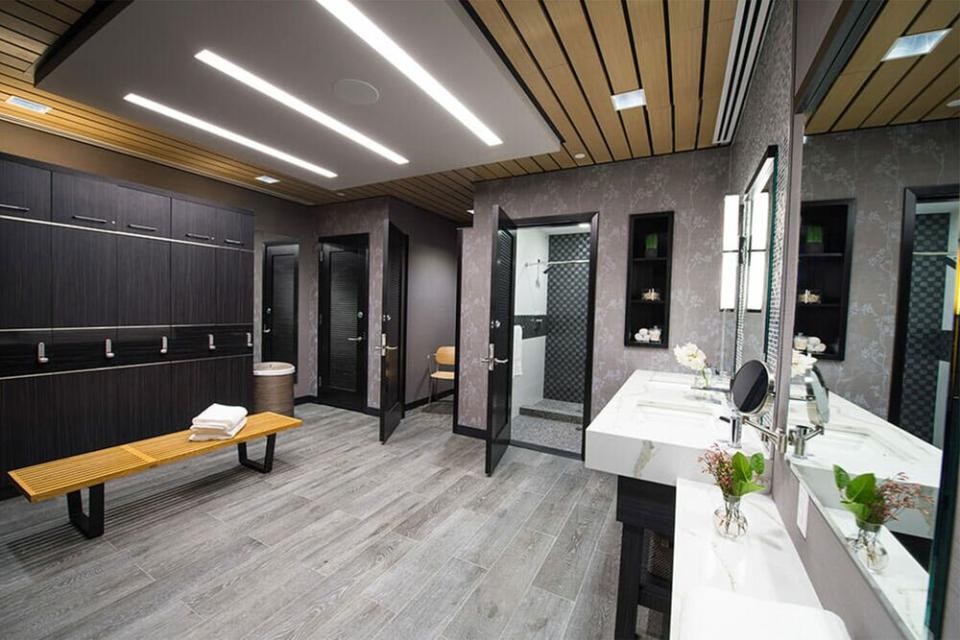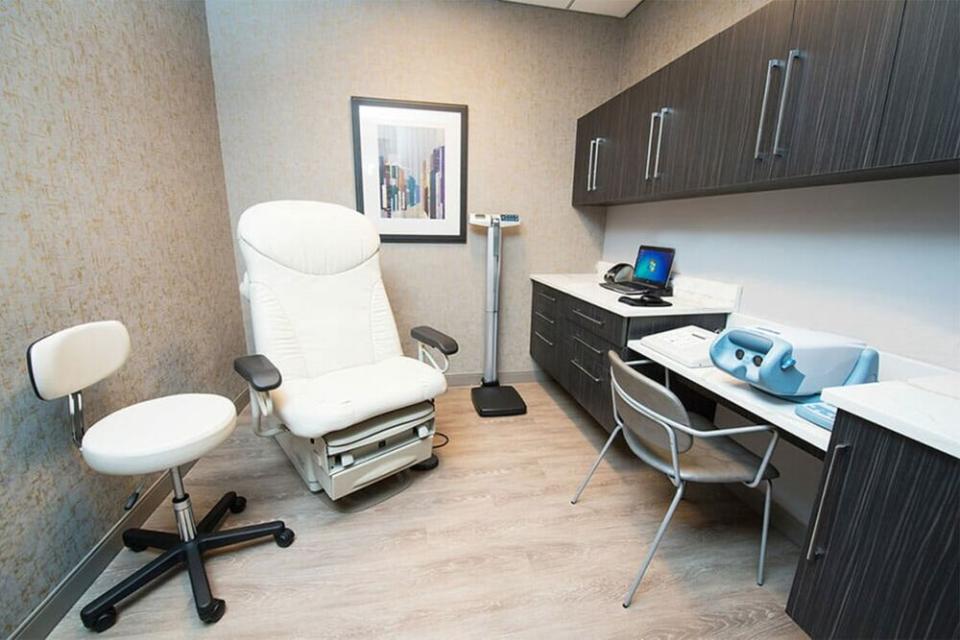We Tried a $5K 'Executive' Physical Exam — Is it Worth the Money?
What It Is: Elitra Health’s Executive Physical Exam — a comprehensive exam that attracts busy CEOs who want a thorough assessment in a short amount of time, including blood work and a cardio-pulmonary evaluation with a coronary calcium score. It also includes a fitness assessment, skin cancer screening, hearing and vision tests, nutritional analysis, a review of family history and vaccinations, a mammogram if requested, body composition tests and a full-body CT scan.
Who Tried It: Sheila Cosgrove Baylis, Health editor
When Elitra Health contacted me about trying their “Executive Physical,” I was skeptical. I feared that promoting private and expensive health care was irresponsible if it could contribute to the widening gaps in health care coverage and quality among the rich, middle class and poor. This physical, after all, appeared to be only for the very well-off: $5,000 compared to a typical physical, which is usually free or only carries a small copay for people with insurance.
But in recent years, I’ve grown more and more unhappy with my primary health care: My general practitioner always seems rushed and disinterested, the wait times are long, and getting results can mean 20 minutes tangled in a phone web of “listen to the following options” and “we apologize for the inconvenience.” Also my doctor sends me to a separate lab to have my blood drawn, which is probably easier for them and cheaper for the insurance company, but for me it means taking more time off of work, driving somewhere else and waiting for quite a long time in another room of potentially contagious people.
So I decided to check it out and see if the exam at a concierge clinic could possibly be $5,000 better.
I filled out all of my forms electronically prior to my visit, and was told not to eat anything after midnight the night before. I arrived at the fancy building in downtown Manhattan at 8 a.m. for my five-hour physical and was immediately ushered into the well-appointed locker room by the lovely and organized Anne Reyman, who is the lead nurse and patient host at Elitra.

She introduced herself and explained the sequence of events for the day. I wore workout clothes as they recommended, so I didn’t need to put much in the spa-like locker system. Then I was guided almost immediately to the phlebotomist. Not having to wait long or walk around the halls in a half-open gown increased my confidence in the place. After my hearing and vision tests, they gave me avocado toast and coffee in a conference room that made me feel like I could run the world.

Next I had a mammogram, various scans and a stress test where I had to run on a treadmill. The most impressive of the scans was the coronary calcium score. It’s a cross section of the heart, showing the inside of the arteries and detecting any plaque on the outer rim of the blood vessel walls. Even a small speck of plaque, which shows up as a yellow dot, should be closely monitored to prevent a future heart attack.
“I couldn’t have shown you this two years ago,” medical director Dr. Avram Nemetz told me of the high-tech imaging system. “It’s like looking into the future. It’s freaky!”
He said he recently had a 35-year-old man in the office with “a dot” of plaque, but “on average it doubles every five years. Before he gets too old, he’s going to run into the problem of exponential growth. If you skip ahead to when he’s 65, he’s up into the age range where, well, he’s going to probably need a stent before that happens. But we have a 30-year window onto where that’s going, and we’re not going to let that happen.”
Dr. Nemetz said he can predict that at around 50 years old, that man will need to go on a statin like Lipitor or Crestor. “With the statins, instead of plaque doubling every five years, they only double every 12. That’s basically all you have to do [to prevent a heart attack].”

After he looked through all of my test results, he told me that I didn’t have any plaque in my arteries – information I didn’t know I cared about so much until that day. Like the 35-year-old man he spoke of, knowing whether or not I was going to need to go on statins in my 50s is very valuable information … maybe even $5,000 worth?
Dr. Nemetz recommends the coronary calcium scan for everyone, not just for those with a family history of heart disease. And the issue of access to a test like this is key when considering whether the expenditure is worth it. I asked him if someone could get one of these scans another way, if he or she couldn’t afford a fancy physical.
“Theoretically, if you have a primary care doctor, they can write you a prescription for a coronary calcium score and then you make an appointment at the radiology place where they do the scan, and they’ll send the results to your primary care doctor,” he said. “But it would be an extremely expensive thing for the insurance companies to do [for everyone]. They’re perfectly aware of this test.”
He didn’t say it directly, but it seemed that much of what Dr. Nemetz is trying to do at Elitra Health is get out from under the restrictions of insurance companies so he can practice the most modern, responsible and preventative medicine possible.
While that sort of care isn’t available to everyone, and he acknowledges many of his clients are millionaires and even billionaires, he’s hoping the model he’s creating could eventually impact health care more broadly. But for the average American to get the kind of care I received at Elitra Health, a lot would have to change.
In the case of the coronary calcium score, Dr. Nemetz pointed out that the test isn’t just a scan from the machine, but information that needs to be read by an expert. At Elitra, the in-house radiologist Dr. Harris read the image before I met with Dr. Nemetz for the second time that same day. The test is also a CT scan of the chest that would have detected abnormal lymph nodes that are a sign of lymphoma. They went through all of my blood work results in conjunction with the other tests I did that day in order to detect any anomalies and create a full picture of my health.
While I probably could replicate a lot of these tests using my in-network providers, I would have to have a willing primary care doctor, the time to make multiple appointments and follow up and a way to coordinate all of the specialists. Some health groups that take insurance have this type of coordination, but there’s no way you could achieve it in one morning or get all of the tests without extra phone calls and paperwork. In my experience as a health editor, people who aren’t presenting acute symptoms have a harder time getting what insurance deems to be “extra” tests than people who are already sick, and this in-depth physical is all about prevention.
So I started to think about the whole thing in a different way — detecting indicators for a serious illness early on would certainly be worth $5k, not to mention Elitra’s connection to top-tier experts should I be given bad news. “If you have an obscure medical problem, we have the capability of finding the best person in the United States for that particular problem,” Dr. Nemetz said. Of course, those specialists may or may not take your insurance, but “we make sure that people are very well set up and we will remain responsible for them until the point that they don’t need us to be the primary doctors managing things.”
The Verdict:
I was given a clean bill of health! Dr. Nemetz: “You could climb Mt. Everest. Not that you should, but your heart would be fine.” Me: “It’d be the rest of me that would have problems.” (Read: I am not the kind of girl who climbs Mt. Everest.)
Dr. Nemetz and I quickly became buddies because I got to see him twice during my visit for more than an hour of face time — and my understanding is that amount of time with the doctor wasn’t just because of our interview, but a regular part of the offering. He also asked me about my mental health and tested my cognition; they measured my body fat with a 3D picture. I also had a consultation with an exercise physiologist and a nutritionist, who put together individualized plans for me. Since I didn’t have any glaring issues, Dr. Nemetz said I wouldn’t need to return for another full physical for five years.
Overall I had the equivalent of what I measured to be at least seven doctor appointments in the span of a little more than five hours — one of the reasons the service appeals to time-crunched executives. But busy parents may also want to consider the value of this; in addition to the time saved, finding troubling indicators early on and creating a preventative plan could save a lot of money and missed work days in the future and potentially add years to your life.
Of course, the question of should an average American have to save up money for such a thorough and preventative health exam is another matter. Certainly, many more Americans should have access to this type of preventative care. But while our complex and broken health care system is or is not getting fixed, it may be worth reprioritizing our budgets.

